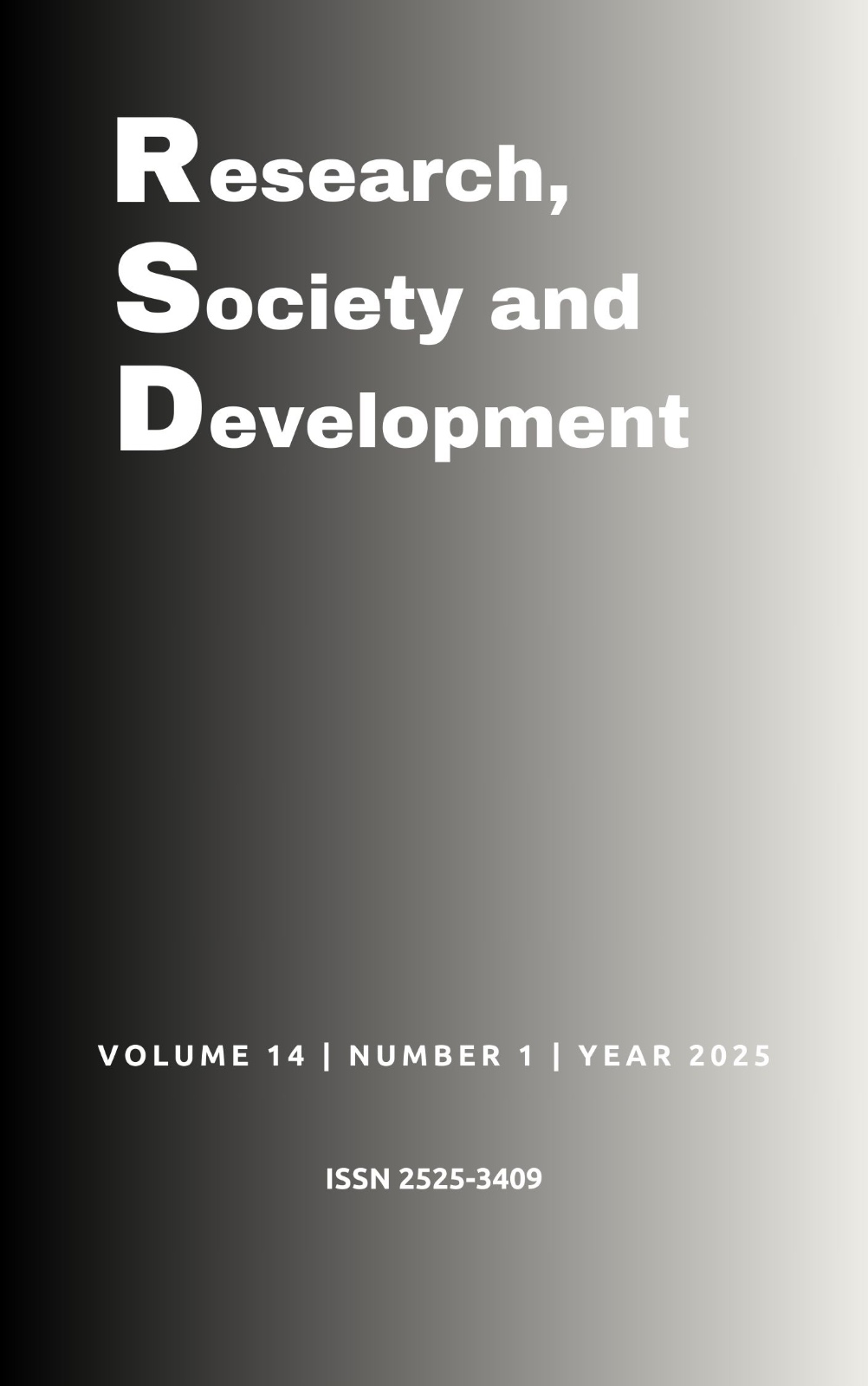Anaphylactic reaction to Sugammadex: A narrative review
DOI:
https://doi.org/10.33448/rsd-v14i1.47982Keywords:
Anaphylaxis; Sugammadex; Anesthesiology.Abstract
Sugammadex is a drug widely used for the selective reversal of the neuromuscular blockers rocuronium and vecuronium. The medication has several advantages, such as the rapid reversal of blockade and its safety profile. However, rare cases of hypersensitivity reactions have been described in the literature. Thus, the present study aimed to provide the most current information regarding the pathophysiology, epidemiology, diagnosis, and treatment of anaphylactic reactions to sugammadex, based on scientific evidence and the most recent guidelines. Searches were conducted in indexed journals within the PubMed and LILACS databases. Additionally, important anesthesiology textbooks were reviewed. This adverse event has been presenting new reports every year, and anesthesiologists should be aware of the possibility of such reactions developing. Furthermore, they must be prepared to identify the reaction and act promptly to ensure patient safety. It is noteworthy that the reaction can occur not only due to sugammadex alone but also due to the sugammadex-rocuronium complex. The gold standard for specific diagnosis remains the skin test, while treatment continues to involve the administration of epinephrine, use of other medications, and cessation of the causative agent.
References
Arslan, B., Sahin, T., & Ozdogan, H. (2021). Sugammadex and anaphylaxis: An analysis of 33 published cases. Journal of anaesthesiology, clinical pharmacology, 37(2), 153–159. https://doi.org/10.4103/joacp.JOACP_383_19
Banoub, R., Alalade, E., Bryant, J., Winch, P., & Tobias, A. J. D. (2023). Allergic Reactions to Sugammadex: A Case Series and Review of the Literature. The journal of pediatric pharmacology and therapeutics: JPPT : the official journal of PPAG, 28(4), 374–379. https://doi.org/10.5863/1551-6776-28.4.374
Boer, H. D., & Hunter, J. M. (2020). Sugammadex or neostigmine: should potential anaphylaxis be the overriding factor in the choice of a reversal drug? Comment on Br J Anaesth 2020; 124: 154-63. British journal of anaesthesia, 125(2), e220–e221. https://doi.org/10.1016/j.bja.2020.03.017
Choi, S. C., Han, S., Kwak, J., & Lee, J. Y. (2020). Anaphylaxis induced by sugammadex and sugammadex-rocuronium complex -a
case report. Korean journal of anesthesiology, 73(4), 342–346. https://doi.org/10.4097/kja.19344
Cordeiro, A. M., Oliveira, G. M. D., Rentería, J. M., & Guimarães, C. A. (2007). Revisão sistemática: uma revisão narrativa. Revista do colégio brasileiro de cirurgiões, 34, 428-431.
Gropper, M. A., Cohen, N. H., Eriksson, L. I., Fleisher, L. A., Leslie, K., Wiener-Kronish, J. P. (2019). Miller’s Anesthesia (9ª edição). Elsevier.
Hong, S. J., & Lee, J. Y. (2020). Skin test after anaphylaxis to sugammadex. Korean journal of anesthesiology, 73(1), 83–84. https://doi.org/10.4097/kja.19408
Horiuchi, T., Takazawa, T., Sakamoto, S., Orihara, M., Yokohama, A., Uchiyama, M., & Saito, S. (2021). Possible immunoglobulin-E-dependent sugammadex-induced anaphylaxis caused by an epitope other than γ-cyclodextrin: a case report. Journal of medical case reports, 15(1), 313. https://doi.org/10.1186/s13256-021-02894-3
Ju, J. W., Kim, N., Yang, S. M., Kim, W. H., & Lee, H. J. (2021). Estimated Incidence of Sugammadex-Induced Anaphylaxis Using the Korea Adverse Event Reporting System Database. Journal of clinical medicine, 10(15), 3202. https://doi.org/10.3390/jcm10153202
Kadiyala, M., Gedulig, T., & Banik, R. K. (2023). Adverse Effects of Sugammadex on the Cardiovascular System. Cureus, 15(2), e34728. https://doi.org/10.7759/cureus.34728
Kim, S. M., Oh, S. H., & Ryu, S. A. (2021). Treatment of rocuronium-induced anaphylaxis using sugammadex - A case report. Anesthesia and pain medicine, 16(1), 56–59. https://doi.org/10.17085/apm.20074
Lazo Uslar, C., Navarro Vives, L., Miquel Marco, S., Roger Reig, A., & Basagaña Torrento, M. (2022). Sugammadex-Induced Anaphylaxis: 2 Case Reports. Journal of investigational allergology & clinical immunology, 32(2), 152–154. https://doi.org/10.18176/jiaci.0719
Lopez-Raigada, A., Vega de la Osada, F., Lopez-Sanz, C., Múgica García, M. V., Alfranca, A., & Blanco, C. (2022). Severe Perioperative Anaphylaxis due to Allergy to the Sugammadex-Rocuronium Complex. Journal of investigational allergology & clinical immunology, 32(2), 163–164. https://doi.org/10.18176/jiaci.0730
Manica, J. (2017). Anestesiologia (4º ed.). Editora Artmed
Orihara, M., Takazawa, T., Horiuchi, T., Sakamoto, S., Nagumo, K., Tomita, Y., Tomioka, A., Yoshida, N., Yokohama, A., & Saito, S. (2020). Comparison of incidence of anaphylaxis between sugammadex and neostigmine: a retrospective multicentre observational study. British journal of anaesthesia, 124(2), 154–163. https://doi.org/10.1016/j.bja.2019.10.016
Rother, E. T. (2007). Revisão sistemática X revisão narrativa. Acta Paulista De Enfermagem, 20(2), v–vi. https://doi.org/10.1590/S0103-21002007000200001
Zecic, F., Smart, M. H., Abbey, T. C., Pazhempallil, A., & Korban, C. (2022). Sugammadex-induced anaphylactic reaction: A systematic review. Journal of anaesthesiology, clinical pharmacology, 38(3), 360–370. https://doi.org/10.4103/joacp.JOACP_573_20
Downloads
Published
How to Cite
Issue
Section
License
Copyright (c) 2025 Márcio Duarte Carvalho Alves; João Antônio Santos Vieira; Marcos Cauã Sena de Andrade; Mariana Santos Alencastro Figueiredo; Nívea Maria Ribeiro Almeida; Rafael Araujo Vieira; Nycolle Evelyn Mendonça da Silva; Sergio Lucas Fontes Costa Nunes

This work is licensed under a Creative Commons Attribution 4.0 International License.
Authors who publish with this journal agree to the following terms:
1) Authors retain copyright and grant the journal right of first publication with the work simultaneously licensed under a Creative Commons Attribution License that allows others to share the work with an acknowledgement of the work's authorship and initial publication in this journal.
2) Authors are able to enter into separate, additional contractual arrangements for the non-exclusive distribution of the journal's published version of the work (e.g., post it to an institutional repository or publish it in a book), with an acknowledgement of its initial publication in this journal.
3) Authors are permitted and encouraged to post their work online (e.g., in institutional repositories or on their website) prior to and during the submission process, as it can lead to productive exchanges, as well as earlier and greater citation of published work.

